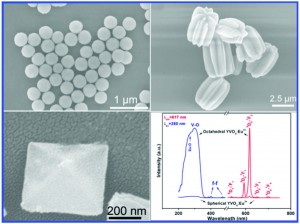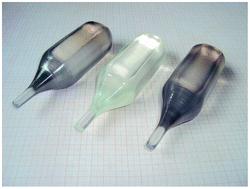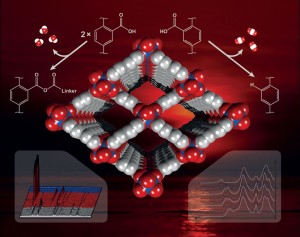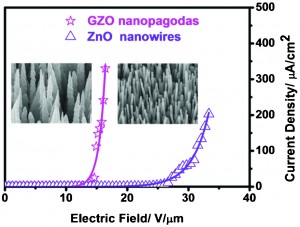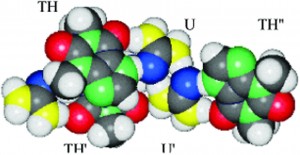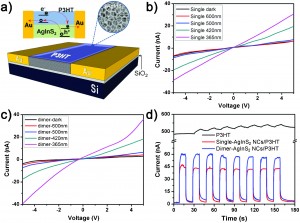This month sees the following articles in CrystEngComm that are in the top ten most accessed:-
Controlled strategy to synthesize SnO2 decorated SnS2 nanosheets with enhanced visible light photocatalytic activity
Xianlong Zhou, Tengfei Zhou, Juncheng Hu and Jinlin Lia
CrystEngComm, 2012,14, 5627-5633
DOI: 10.1039/C2CE25309G
A zwitterionic metal–organic framework with free carboxylic acid sites that exhibits enhanced hydrogen adsorption energies
Marianne B. Lalonde, Rachel B. Getman, Jeong Yong Lee, John M. Roberts, Amy A. Sarjeant, Karl A. Scheidt, Peter A. Georgiev, Jan P. Embs, Juergen Eckert, Omar K. Farha, Randall Q. Snurr and Joseph T. Hupp
CrystEngComm, 2013, Advance Article
DOI: 10.1039/C3CE40198G
Synthesis of graphene–ZnO nanorod nanocomposites with improved photoactivity and anti-photocorrosion
Zhang Chen, Nan Zhang and Yi-Jun Xu
CrystEngComm, 2013,15, 3022-3030
DOI: 10.1039/C3CE27021A
An unusual highly connected 3D net with hydrophilic pore surface
Huabin Zhang, Ping Lin, Guodong Zou, Xiaochen Shan, Fenglei Du and Shaowu Du
CrystEngComm, 2013,15, 3016-3021
DOI: 10.1039/C3CE26788A
Construction of metal–organic coordination polymers derived from 4-substituted tetrazole–benzoate ligands: synthesis, structure, luminescence, and magnetic behaviors
Jia-Yin Sun, Li Wang, Dao-Jun Zhang, Da Li, Yu Cao, Li-Ying Zhang, Shuang-Li Zeng, Guang-Sheng Pang, Yong Fan, Jia-Ning Xu and Tian-You Song
CrystEngComm, 2013,15, 3402-3411
DOI: 10.1039/C2CE26793D
Porous aromatic frameworks: Synthesis, structure and functions
Teng Ben and Shilun Qiu
CrystEngComm, 2013,15, 17-26
DOI: 10.1039/C2CE25409C
Stoichiometry, temperature, solvent, metal-directed syntheses of metal–organic frameworks based on flexible V-shaped methylenebis(3,5-dimethylpyrazole) and various aromatic dicarboxylate acids
Xiang-Guang Guo, Wen-Bin Yang, Xiao-Yuan Wu, Qi-Kai Zhang, Lang Lin, RongMin Yu and Can-Zhong Lu
CrystEngComm, 2013,15, 3654-3663
DOI: 10.1039/C3CE00048F
Homochiral metal–organic porous materials for enantioselective recognition and electrocatalysis
Guangju Zhang, Hailiang Hu, Hao Li, Fangfang Zhao, Yang Liu, Xiaodie He, Hui Huang, Yan Xu, Ying Wei and Zhenhui Kang
CrystEngComm, 2013,15, 3288-3291
DOI: 10.1039/C3CE40162F
Application of hierarchical TiO2 spheres as scattering layer for enhanced photovoltaic performance in dye sensitized solar cell
Zhiyong Gao, Zhuangli Wu, Xiaomin Li, Jiuli Chang, Dapeng Wu, Pengfei Ma, Fang Xu, Shuyan Gao and Kai Jiang
CrystEngComm, 2013,15, 3351-3358
DOI: 10.1039/C3CE27098J
Synthesis of LiNi0.5Mn1.5O4 and 0.5Li2MnO3–0.5LiNi1/3Co1/3Mn1/ 3O2 hollow nanowires by electrospinning
Eiji Hosono, Tatsuya Saito, Junichi Hoshino, Yoshifumi Mizuno, Masashi Okubo, Daisuke Asakura, Koichi Kagesawa, Daisuke Nishio-Hamane, Tetsuichi Kudo and Haoshen Zhou
CrystEngComm, 2013,15, 2592-2597
DOI: 10.1039/C3CE26972H
Why not take a look at the articles today and blog your thoughts and comments below.
Fancy submitting an article to CrystEngComm? Then why not submit to us today or alternatively email us your suggestions.
Comments Off on Top ten most accessed articles in March


